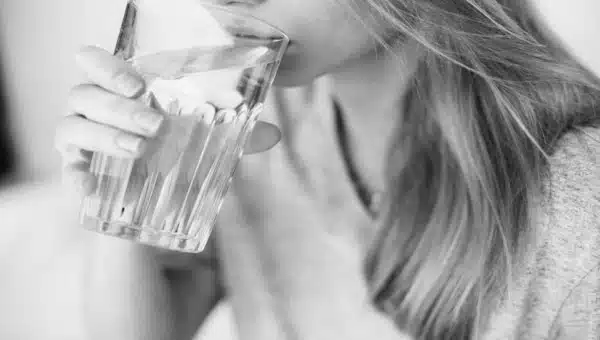The excitement of moving into a new home often comes with its fair share of challenges. One common issue faced by many new homeowners is dealing with hard water deposits. These are mineral buildups that can affect the appearance and function of your plumbing systems and appliances. But fear not! This guide by a pro plumber will provide you with easy, step-by-step instructions on how to rid your new home of these stubborn deposits.
Table of Contents
Understanding the Issue
Hard water deposits, also referred to as limescale or mineral deposits, occur due to the presence of minerals in your water supply, primarily calcium and magnesium. When the water is heated or allowed to evaporate, these minerals remain, forming a residue that can range from a powdery dust to a hard crust.
These deposits can build up over time in noticeable places like your faucets and showerheads, but also in less visible areas such as inside your appliances like your dishwasher and washing machine. This buildup can hinder your appliances’ performance, decrease their efficiency, and even shorten their lifespan if left untreated.
Identifying Hard Water Deposits
Hard water deposits often make their presence known in rather obvious ways around your home. They typically appear as an unsightly, crusty buildup that is white or grey in color on your fixtures or appliances. From faucets to showerheads, anywhere water flows regularly, these stubborn deposits can form.
One of the easiest ways to spot these deposits is by observing a decline in water pressure or flow from your faucets or showerheads. This is a result of the deposits constricting the water’s path over time, which in turn impacts the pressure.
For appliances, the signs might not be as straightforward. If you notice your appliances performing at a lower efficiency than usual, consuming more energy, or experiencing frequent malfunctions, hard water deposits may be at fault. This is because the deposits can form in less obvious locations, like the inner workings of your washing machine or dishwasher, where they can impact functionality and efficiency.
While they might not be visually appealing or good for your appliances, identifying hard water deposits is the first step towards tackling the problem and maintaining your new home.
Gather Your Supplies
As you gear up to tackle the hard water deposits in your new home, it’s essential to have all your cleaning tools within arm’s reach. Start by procuring a pair of sturdy rubber gloves; these will safeguard your hands during the cleaning process. Next, grab a soft scrub brush or an old toothbrush to gently scrub away the deposits without scratching your fixtures or appliances.
Also, you’ll need a clean, dry cloth. After you’ve successfully removed the deposits, this cloth will be used to wipe down the surfaces and prevent any residual water from evaporating and causing new deposits.
For those really stubborn deposits that refuse to budge, a plastic scraper will prove invaluable. It’s important that it’s plastic and not metal, to avoid causing scratches or any other damage to your surfaces.
The most critical part of your arsenal, however, is your cleaning solution. There are several options to choose from, which we will delve into in the following section.
With these supplies at your disposal, you’re well-equipped to start the fight against hard water deposits in your home. Don’t worry if you don’t have all these items readily available. Most of these supplies can be easily found in local stores or even online. Preparing ahead will make the cleaning process smoother and more efficient.
Choose Your Cleaning Solution
There are a variety of cleaning solutions that you can employ to tackle hard water deposits. One of the most readily available and cost-effective is simple white vinegar. Due to its naturally acidic properties, white vinegar is able to dissolve mineral deposits effectively.
For those who prefer a more targeted approach, you can opt for commercial cleaning products specifically formulated to combat limescale. These products are typically more potent and may yield quicker results. Nonetheless, be sure to strictly adhere to the instructions provided by the manufacturer, as incorrect usage can potentially cause damage to your fixtures or appliances.
Regardless of the solution you choose, ensure it’s safe for the surface you’re cleaning. Some substances may not be suitable for certain materials, so it’s always best to double-check. A test in a hidden or less noticeable area can also help ensure your cleaning solution won’t cause discoloration or other unwanted effects.
In sum, having the right cleaning solution at your disposal will make the job of removing hard water deposits in your home much easier. With options ranging from white vinegar to commercial cleaners, you’re sure to find a solution that suits your needs and preferences. In the next section, we’ll guide you through the actual cleaning process using your chosen solution.
The Cleaning Process
Begin your cleaning mission by generously applying your selected cleaning solution directly onto the hard water deposits. If you’ve chosen to use vinegar, it’s recommended to allow it to soak for approximately 15-30 minutes so it can effectively break down the mineral buildup. For those using commercial cleaners, ensure to adhere to the suggested wait time indicated on the product’s packaging.
Once the solution has had sufficient time to soak and start dissolving the stubborn deposits, pick up your soft brush and begin scrubbing. Use gentle, circular motions and avoid applying excessive pressure to protect your fixtures from potential scratching or other damages. You should gradually see the deposits loosening and beginning to come off.
After you’ve successfully scrubbed away the hard water deposits, it’s time to rinse. Use plenty of water to ensure all remnants of the cleaning solution and dissolved deposits are thoroughly rinsed away.
The final step in your cleaning process is drying. Use your clean, dry cloth to wipe down the cleaned area thoroughly. This step is crucial in preventing any residual water from evaporating on your fixtures or appliances, which would just result in a new layer of hard water deposits.
Just remember, patience is key during this process. Some deposits might be more stubborn than others, and that’s okay. Keep going, your efforts will pay off, and your fixtures and appliances will thank you.
Prevention is Key
After tackling those stubborn hard water deposits, you’d want to keep them from returning, right? That’s where prevention comes in. Regular maintenance is the most effective strategy to keep those unsightly deposits at bay. Make it a habit to clean your fixtures and appliances frequently to prevent the deposits from settling and hardening over time.
Another effective prevention measure to consider is investing in a water softening system. These systems work to reduce the level of minerals in your water supply, essentially stopping the problem at its source. While this might initially seem like a significant investment, in the long run, it could save you a great deal of time, effort, and even money by maintaining the efficiency of your appliances and plumbing fixtures.
Lastly, remember to always dry off your fixtures and appliances after use. It may sound simple, but it can make a significant difference. Water left to evaporate often leaves behind the minerals that create these deposits. By taking the extra minute to dry off these surfaces, you can prevent the formation of new deposits.
Conclusion
In conclusion, while removing hard water deposits can be a challenging task, preventing their recurrence is entirely within your control. Regular cleaning, considering a water softening system, and quick drying are simple yet effective ways to maintain the beauty and efficiency of your new home. And, after all, the joy of homeownership lies not just in possessing your dream house, but in keeping it in its best possible condition.

